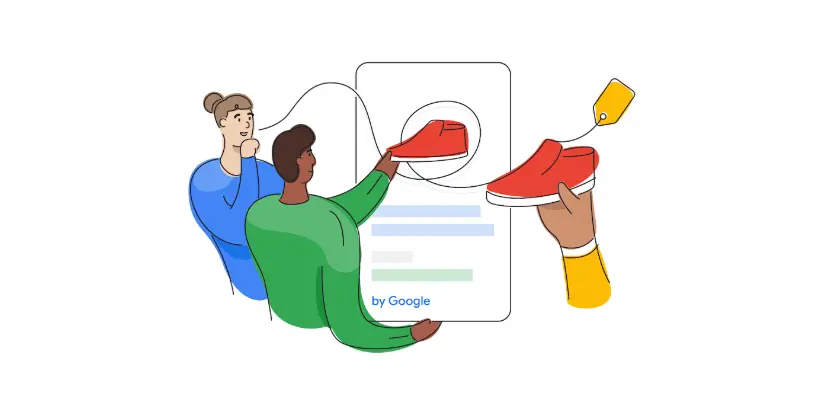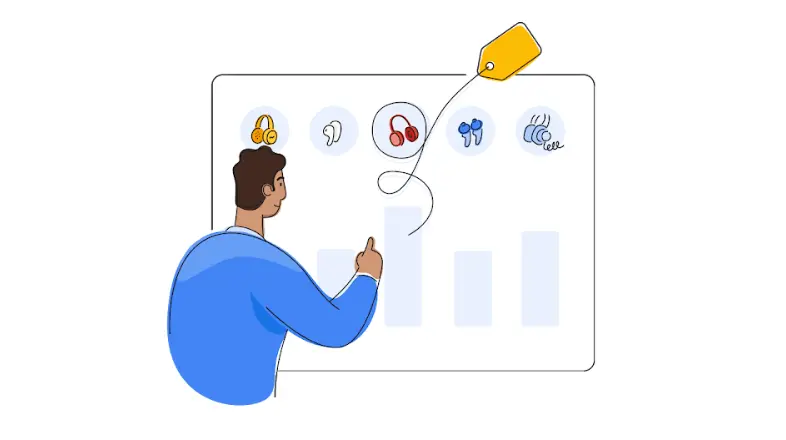If you’ve been running Google Ads for your eCommerce store over the past few years, there’s a good chance you’ve heard of Google Smart Shopping.
It was a favourite among advertisers for its “set it and forget it” approach, allowing businesses to show products across Google’s networks with minimal manual setup.
But here’s the thing, Smart Shopping is no longer the new kid on the block. In fact, Google has now replaced it with Performance Max, promising even more reach and automation.
In this guide, we’ll break down what Google Smart Shopping was, how it worked, why it’s no longer around, and how Performance Max steps in to take its place.
What is Google Smart Shopping?

Google Smart Shopping was a campaign type in Google Ads designed specifically for eCommerce businesses. It combined the standard Shopping Ads format with Display remarketing, YouTube ads, and even Gmail promotions, all under one automated system.
The idea was simple: you upload your product feed into Google Merchant Center, set a budget, and Google’s machine learning would do the heavy lifting: choosing where and when to show your ads to maximise sales or conversions.
Instead of manually managing keywords or adjusting bids for every product, Smart Shopping handled it all. This made it especially appealing to small business owners who didn’t have the time (or desire) to manage highly detailed campaigns.
Some key features of Google Smart Shopping included:
- Automated bidding strategies based on your goals (like maximising conversion value)
- Wide reach across Search, Display, YouTube, and Gmail
- Remarketing to people who had already visited your site
- Minimal day-to-day management
In short, it was Google’s way of making high-performance shopping campaigns accessible—even if you weren’t a PPC expert.
How Does Smart Shopping Work?
The magic of Google Smart Shopping came from its automation. Once your product feed was ready in Google Merchant Center and linked to Google Ads, you’d create a Smart Shopping campaign, set your budget, and let Google’s algorithm take over.
Here’s what happened behind the scenes:
- Product Data + User Signals
Google used your product feed (images, titles, prices, and descriptions) along with user behaviour data like past searches, impressions, and website visits. - Automated Ad Creation
Instead of you writing headlines and picking formats, Google dynamically created ads using your product data. These could appear on Search results, YouTube videos, Display banners, and Gmail promotions. - Smart Bidding
Google’s machine learning adjusted bids in real-time to hit your performance goals—whether that was maximising sales, improving CTR, or achieving a target ROAS (Return on Ad Spend). - Remarketing Power
Smart Shopping also automatically showed your ads to people who had visited your website before—keeping your products top-of-mind until they were ready to purchase.
The big advantage? It drastically reduced manual campaign management.
The trade-off? Less control over exactly where your ads appeared and how much was spent on specific products.
Is Google Smart Shopping Still Around?

The short answer: no, at least not in its original form.
In 2022, Google officially phased out Smart Shopping campaigns and automatically upgraded them to Performance Max campaigns. This wasn’t just a minor tweak—it was a complete shift in how these campaigns worked.
If you had a Smart Shopping campaign running, Google migrated it to Performance Max with the promise of more reach, more automation, and more data-driven targeting.
The idea was to give advertisers access to all Google Ads inventory (Search, Display, YouTube, Gmail, Discover) under one campaign type, instead of limiting it to the Shopping + Display combination that Smart Shopping offered.
So while you can’t create new Smart Shopping campaigns anymore, its core features: automated bidding, wide placement reach, and product-focused ads are still live on within Performance Max.
Differences Between Google Smart Shopping and Performance Max Campaign
Although Performance Max inherits the foundation of Smart Shopping, there are key differences that marketers need to understand:
1. Broader Reach
Smart Shopping ads were shown across Search, Display, YouTube, and Gmail. Performance Max adds Google Discover into the mix, meaning your products can appear in even more contexts, reaching potential buyers earlier in their journey.
2. More Asset Types
Smart Shopping relied heavily on your product feed from Google Merchant Center. Performance Max still uses that feed but also lets you upload additional assets—headlines, descriptions, videos, and images—so the system can build more diverse ad creatives.
3. Expanded Targeting Capabilities
Smart Shopping used automation to decide who saw your ads, but it didn’t give you much control over audience signals.
With Performance Max, you can feed Google more specific data about your ideal audience, which works alongside its machine learning to refine targeting.
4. More Detailed Reporting
One of the biggest criticisms of Smart Shopping was its limited reporting—you couldn’t see exactly which placements or search terms drove results.
Performance Max offers more granular insights, so you can understand which asset groups, audiences, and products are contributing most to conversions.
5. Single Campaign for All Goals
Smart Shopping was mainly focused on driving online sales. Performance Max supports multiple goals—like lead generation, store visits, and brand awareness—making it a more flexible option for different types of businesses.
In short, while Smart Shopping was a powerful tool for eCommerce, Performance Max is designed to be a more versatile, all-in-one campaign type that can serve nearly any advertising objective.
Conclusion
Google Smart Shopping may no longer exist as its own campaign type, but its spirit lives on in Performance Max: a more advanced, all-in-one solution that brings your products in front of the right people at the right time, across all of Google’s channels.
For eCommerce businesses, this shift means both opportunities and challenges. On the one hand, you get broader reach, more creative options, and deeper insights.
On the other hand, Performance Max requires a thoughtful setup to ensure that automation works in your favour—rather than wasting budget on unqualified clicks.
That’s where expert guidance makes all the difference. At Ostenpowers, our Google Ads consultants know how to craft Performance Max campaigns that maximise ROI, improve CTR, and reach high-intent audiences through precise targeting.
So, if you’re ready to make Performance Max work for your business, let’s talk!









